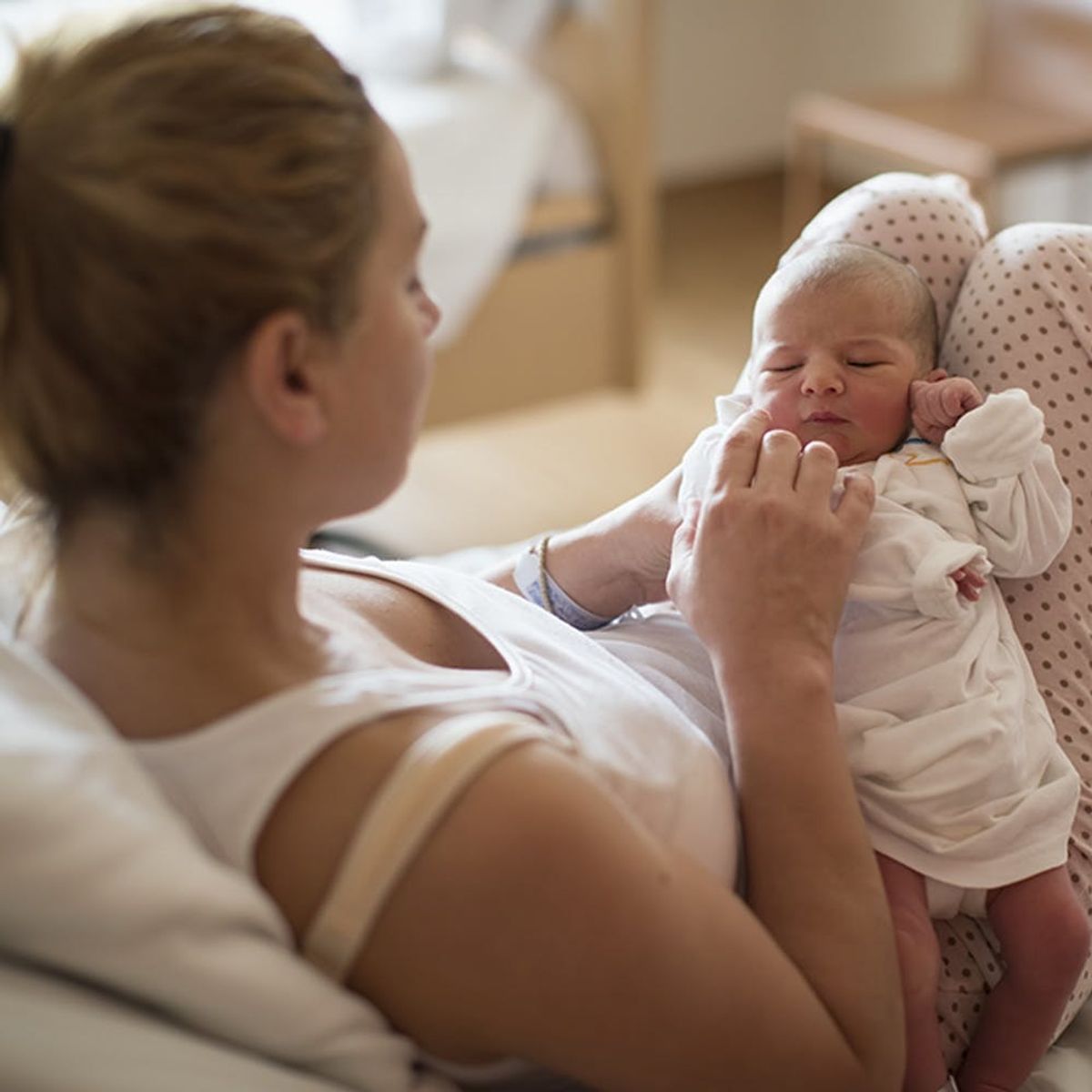Depression is only part of it.
Why ‘PMAD’ Is Replacing ‘Postpartum Depression’ as the Catch-All for Maternal Mental Health


An honest look at the ways women are taking care of their minds and bodies in real life.
“A little worry is normal,” other moms would tell me, assuring me I’d feel better when I got used to motherhood. But I didn’t feel normal — I felt like I was suffocating.
Juggling my newborn son’s around-the-clock demands with my own physical and emotional needs — all the while sleep deprived — made me feel like I couldn’t breathe. His stirring in the bassinet was enough to propel me into a full-blown panic attack that would keep me up all night, worrying about his well-being or mine.
But I never thought to bring up my struggles to my midwife at postpartum check-ups, since I didn’t fit the bill for postpartum depression. I wasn’t sad or tearful, and I hadn’t had any thoughts about harming myself or my baby. These things made it easy for me to fly under the radar, all while fear consumed my life.
It’s clear to me half a decade later that I had postpartum anxiety, a disorder that affects an estimated 10 percent of new moms. Though postpartum anxiety disorder is diagnosed at nearly the rate of postpartum depression, which affects an estimated 15 percent of women after giving birth, the latter condition tends to receive more attention from media and the medical community. Worrying is often dismissed as a “normal” aspect of pregnancy and new motherhood, to the detriment of moms like me, who may need medical intervention. It’s likely that the actual number of new moms who experience this condition is much higher than we think.

The good news is, the landscape of maternal mental health has become more inclusive since I had my first son five years ago, which means moms can receive accurate diagnoses, and more importantly, more moms may be inclined to ask for help. Changing how we talk about it is the first step.
I didn’t know it then, but the scope of mental health disorders women experience postpartum is much broader than depression — and for many moms, the symptoms surface before the baby even arrives. That’s why the medical community is beginning to use the term perinatal mood and anxiety disorders (PMAD) to address the spectrum of mod changes that may occur during or after pregnancy, rather than simply applying “postpartum depression” as an imprecise catch-all.
In addition to depression, the term “PMAD” encompasses mood disorders like bipolar disorder, along with anxiety disorders like generalized anxiety, panic disorder, obsessive compulsive disorder, and post-traumatic stress disorder. Reports estimate that up to five percent of women experience postpartum OCD and between four and 10 percent of women experience postpartum panic disorder.
Melissa Whippo, a Licensed Clinical Social Worker at the University of California, San Francisco and the creator of Afterglow, a San Francisco-based postpartum support group, says this small shift in language is a step in the right direction for better diagnosing and supporting moms.
“How we talk about things indicates how we treat and support people going through it,” Whippo tells Brit + Co. “A woman suffering from anxiety during her pregnancy isn’t going to feel understood or helped by a discussion around postpartum depression,” she says. “’PMAD’ helps increase awareness that mood concerns can occur for women at any stage of pregnancy, not just the postpartum setting.”
Whether symptoms are surfacing for the first time or an existing mental illness is worsened by reproductive change, many women also experience mood and anxiety disorders during their pregnancies that may or may not continue into the postpartum months.
Alexandra Sacks, a reproductive psychiatrist whose co-authored book, What No One Tells You: A Guide to Your Emotions from Pregnancy to Motherhood,will be released in April 2019, says a combination of physiological and social factors contribute to maternal mental health during and after pregnancy.
While hormonal changes and sleep deprivation during pregnancy and postpartum can be disruptive to mood, social changes that come with the transition to motherhood can also profoundly affect PMADs.
“Many people go off their medication or stop prior treatment when they get pregnant, or they might stop activities that are stress-relieving, like exercise, or feel socially isolated because they’re not going out with friends or participating in hobbies or rituals that are important to them,” says Sacks.
Whippo says a more complete assessment process — one that screens for anxiety and mood disorders while factoring other potential stressors — is important in helping women suffering from PMADs. For instance, it’s worth considering whether a woman’s distress stems from factors like a difficulty in her partnership, or concerns about financial constraint. Once a woman is accurately screened, a more personalized treatment plan can then be put into place.
“In our treatment protocol at UCSF, we often believe that a combination of individual therapy, support group, sometimes medication and sometimes meditation and yoga, are the most helpful to provide complete support for women,” says Whippo.
Sacks shares Whippo’s optimism about the way ‘PMAD’ will cultivate awareness of the landscape of maternal mental health — especially among women like me, who may not think to ask for help when they need it.
“The shift in language may orient physicians differently, but it also orients the general population differently,” Sacks says. “It’s helpful to people who have anxiety disorders so they feel included in the community of advocacy, and for people who are potential patients to open up the possibility of going to go get help.”
What do you think of the change in language about maternal mental health? Tell us @BritandCo!
(Photo via Getty Images)


















